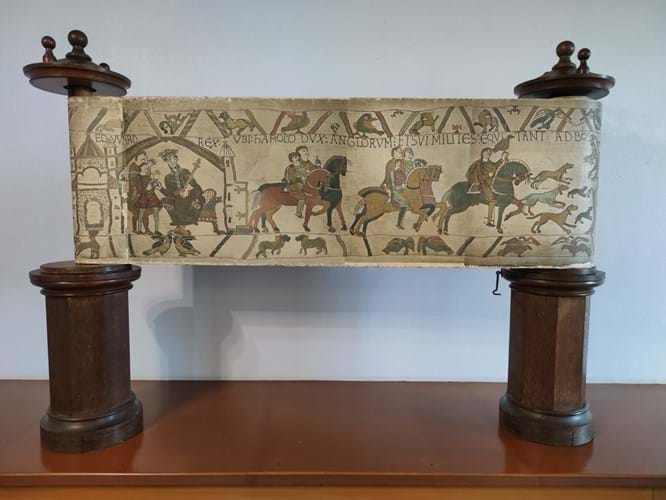The Rolling Stones drummer’s sale took place at Christie’s on September 29, 2023 and the museum has just announced its purchase.
The museum paid a hammer price of £16,000 (£20,160 including buyer’s premium) against an estimate of £8000-12,000.
The life-size 1874 replica of the 11th-century embroidery was created following a project by Joseph Cundall (1818-95) who was sent by the British government in 1872 to France to photograph the entire Bayeux Tapestry. It was recorded on 185 full size glass plates, from which six copies were made and hand-coloured by students of the School of Art, London.
Photographic panorama
Of the six photographic reproductions only three examples are still known: one in a private collection in Wales, a second that is in storage at the V&A, and the one the museum has purchased. This reproduction bought by the museum is displayed on two original 140cm-high oak supports on which the image unfolds.
This is the longest photographic panorama of the 19th century, and it played a major role in popularising the image of the Bayeux Tapestry throughout the world.
This replica was exhibited at several Universal Exhibition, including that of 1873 (London, Royal Albert Hall) and 1893 (Chicago, Women's Building).
Antoine Verney, museum curator, said: "We decided to follow the auction closely, even though we had little hope of acquiring it, thinking that the price would soar. In the end, the 14th and final bid went to the museum! This acquisition is a real treasure trove of heritage that we hope to be able to exhibit in the new museum.”
The Bayeux Museum comprises The Bayeux Tapestry Museum, the art and history Museum Baron Gérard and the Memorial Museum of the Battle of Normandy. The Bayeux Tapestry Museum will close next year and be redeveloped with plans for it to reopen in 2027. The new building is designed to improve the conservation and presentation of the tapestry, which is owned by the French state.






